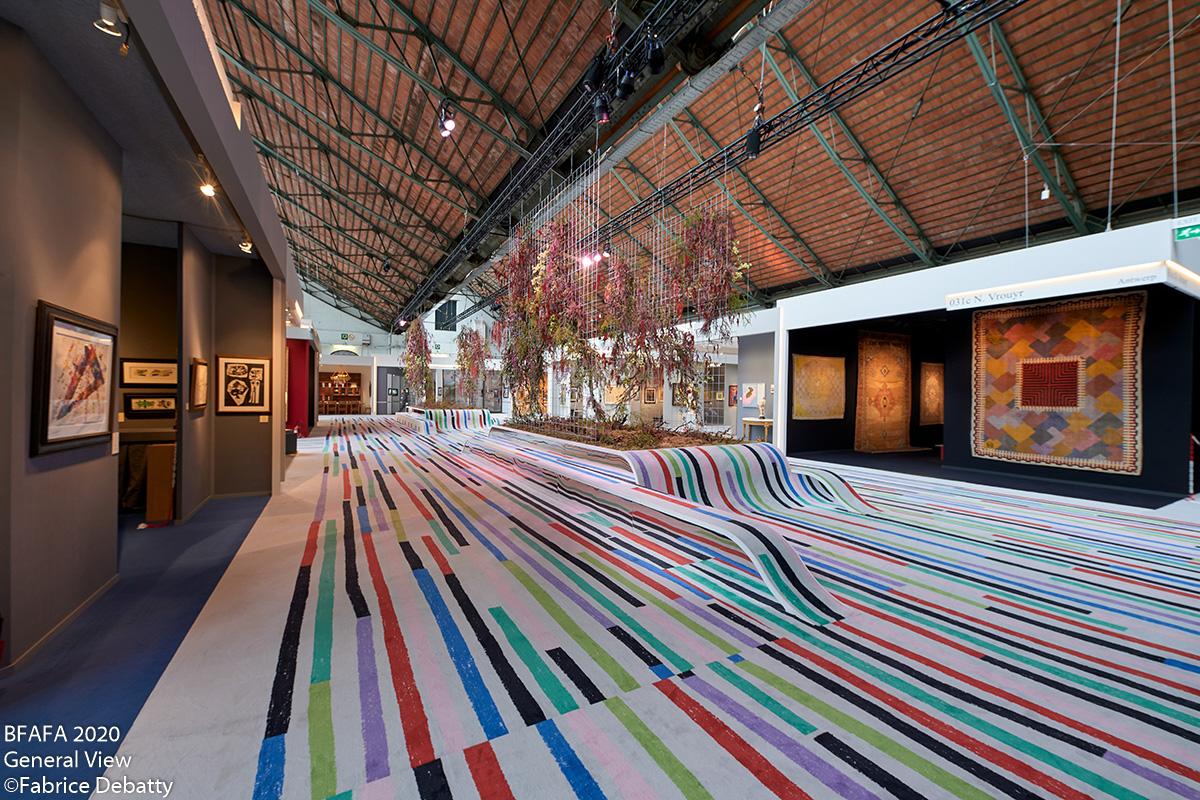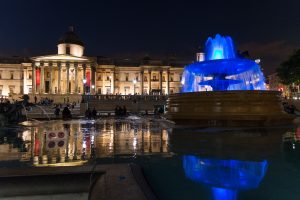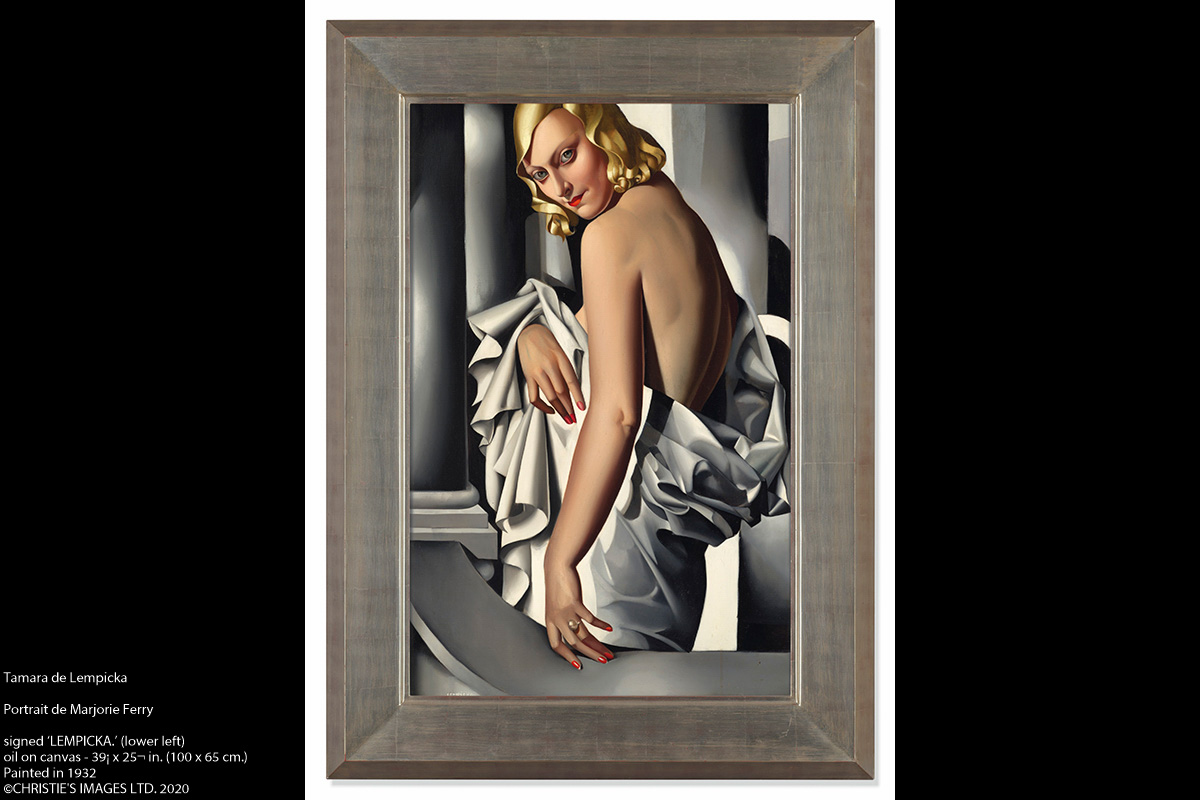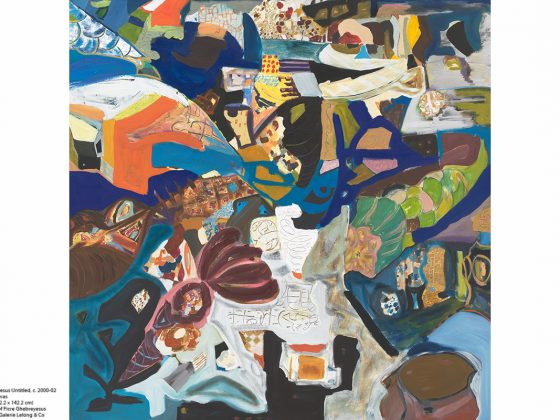IN CELEBRATION OF THE 65TH BRAFA, THE ART FAIR IS ORGANISING A CHARITY AUCTION OF FIVE SEGMENTS OF THE BERLIN WALL
The 65th BRAFA art fair, which takes place from 26 January until 2 February 2020, will be celebrated in a highly original manner with the exclusive exhibition and sale of five segments of the Berlin Wall. The proceeds from the sale will be split among five beneficiaries (associations and museums) in the areas of cancer research, the social integration of people with disabilities and the preservation of art heritage. This initiative is only possible due to BRAFA’s nonprofit status which it has retained for 65 years and allows for greater investment in the arts and support of other non-profit organisations.

BRAFA’s visitors have come to expect a different guest of honour every year. These have included international museums, foundations and artists, who have all added their own unique touch to the event. In 2020, the art fair is choosing an innovative approach, launching an unusual initiative on the occasion of the 65th BRAFA in the form of a charity sale of original segments of the Berlin Wall.
These segments were already acquired in 2018, in anticipation of the 30th anniversary of the fall of the Berlin Wall on 9 November 2019. They were taken from the Hinterlandmauer, or the 68-km ‘inner wall’ that blocked off the border strip to East Berlin. The segments were dismantled by the armed forces of the former German Democratic Republic, or East Germany, during the demolition works following the fall of the Berlin Wall. They were subsequently acquired and re-used by a public works company that is based in a Berlin suburb. The segments, which are 3.8 m tall and 1.2 m wide, weighing 3.6 tons each, feature graffiti on both sides by anonymous street artists from different periods.
A brief historic interlude
Construction of the Berlin Wall commenced during the night of 12 August 1961. The government of East Germany hoped that this would stem the rising flow of migrants from East Berlin and East Germany (and even of other Eastern European countries) to the West. The government had already sealed off the border between the two Germanys and Eastern and Western Europe with an ‘iron curtain’ as Winston Churchill famously called it. Berlin was the weakest link however, prompting this final measure. In spite of the Wall, there were numerous escape attempts, which is why the government of East Germany continually expanded and reinforced the border in Berlin, adding obstacles.
The dismantling took much less time. Demolition started during those historic days of November 1989, when a mistake in a press statement from the East German authorities prompted thousands of inhabitants to rush towards the border points and cross into the West. Soon after, millions of anonymous ‘wall peckers’ (nicknamed “Mauerspechte” in German), armed with hammers, picks or pickaxes, set about demolishing it while the entire world looked on. In the following days and weeks, thousands of people travelled to Berlin in hope of acquiring or even breaking off their own wall fragment as a souvenir. The National People’s Army then proceeded to systematically dismantle and demolish the wall and even sold off certain segments. Nowadays segments of the wall can be found all over the world, in symbolic places or private collections. The large segments that BRAFA will be exhibiting and auctioning off have become quite rare.

The five BRAFA segments and their beneficiaries
The five segments will be exhibited outside the fair at the main entrance and will be sold at the charity auction, which is open to BRAFA visitors for the duration of the fair. The proceeds from the sale will be split among five charities. Firstly, in the area of cancer research, to Télévie, a campaign by Belgian TV channel RTL-TVI and the nonprofit organisation Kom op tegen Kanker. Secondly, an organisation that promotes the social integration of people with disabilities, with CAP48, a charity campaign by Belgian TV channel RTBF and the nonprofit organisation Hart voor Handicap. In the area of art heritage preservation, we have decided to support two projects by the Art & History Museum (Cinquantenaire): a new gallery for the pre-Columbian mummies, and if the museum is able to raise the funds for this project, the restoration and installation of Victor Horta’s winter garden for Jean Cousin in a museum gallery that is dedicated to Art Nouveau.
This initiative is completely in line with the spirit of BRAFA, as it is organised by a nonprofit organisation rather than a trading company. This particularity, which sets BRAFA apart from other major art fairs, also inspired the idea behind this event to a large extent. BRAFA’s objective is not to make a profit but to organise an outstanding art fair, with the best dealers and the most beautiful art objects that are currently available on the market. As Belgium’s leading art event, the fair also aims to attract a maximum number of collectors and international visitors.













